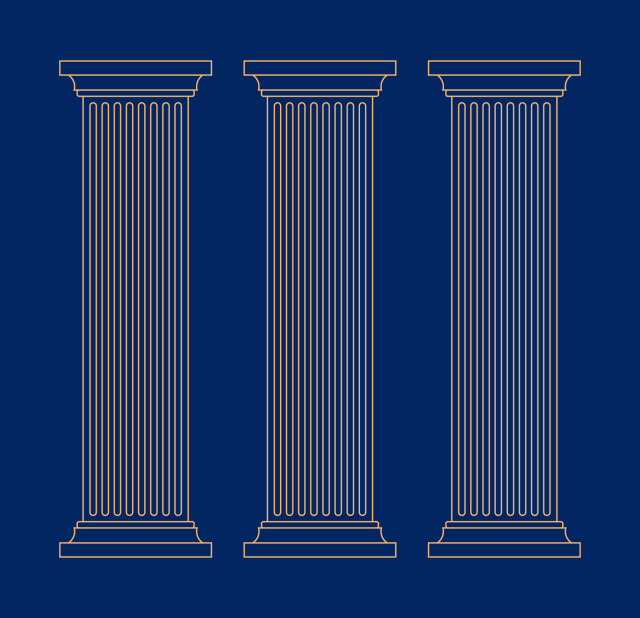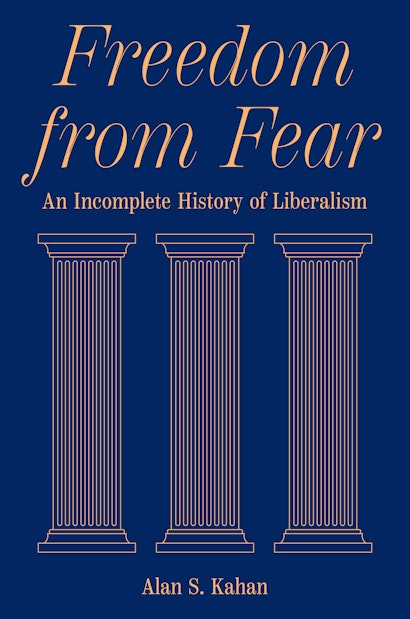Today liberalism faces a global challenge from populism. To successfully meet this challenge, liberals must return to certain features of liberalism common in the nineteenth century but largely absent since WWII. Some liberals’ exclusive focus on economics has left many people out in the cold, and even political liberalism does not suffice to warm the hearts of those culturally alienated by a liberal perspective. Liberalism needs to add a moral and religious appeal, returning to the three pillars of liberal argument: freedom, markets, and morals, which fortified liberalism during the nineteenth century. Liberalism cannot stand on one foot. Liberals must deploy political, economic, and above all moral and religious arguments to defeat populism. Where populists exclude people, liberals must make clear they include everyone—even populists.
Throughout the world, populism is on the march, and liberalism is in retreat. In Finland, with arguably the world’s best educational system and a highly developed welfare state, the populist Finns Party recently took over the Prime Ministership. In the United States, the populist Donald Trump is the once and perhaps future President. In Latin America, Brazil has provided the spectacle of the right-populist Bolsonaro government being succeeded by the left-populist Lula da Silva. Populism has become the voice of a worldwide cultural alienation on both the left and the right from the globalized, cosmopolitan, liberal “elite”. Together the many different populisms form an overlapping illiberal consensus, dedicated to the destruction of the liberal political, economic, and, above all, moral order—or rather, amoral disorder.
The populist attack on immoral/amoral liberalism has many roots. Some arise from traditional religion, while others stem from deeply-held nationalist and communitarian allegiances. More nourishment for populism comes from the resentments of those who feel left behind, often people from the rural areas and small towns that American liberals call fly-over country (in Europe, where the fast trains don’t stop), and populists call the heartland. What the many sorts of populist have in common is the view that only some of the people are really “the people”. Those who are not do not count: rootless cosmopolitans, atheists, homosexuals, those of incorrect ethnic background; above all and everywhere migrants, do not count. Their votes don’t really count either, whatever the law might say. This is why populists think that that their views are always those of the true majority, the true people, the real Americans or Poles or Bolivians, not the counterfeits, who may have white skins in Bolivia or dark ones in the United States. By contrast liberalism, as I have defined it in Freedom from Fear: An Incomplete History of Liberalism, seeks to build a society in which no one need be afraid. Populists are fundamentally illiberal because they always want certain to people to be afraid.
That is not how populists see it, of course. From their perspective, they are the ones with reason to fear liberalism, because the globalized, cosmopolitan, open liberal world gives them many reasons to be afraid, and no reason to hope for a better future. The illiberal democrats of the world strive against the evil liberal elite, which they believe is out to destroy their values. What is worse, the liberal elite does so in the name of an anything-goes pluralism that makes many people feel that no moral compass is left to steer their lives.
Liberals have mostly reacted to this situation with at best an offer to write a check to the victims of foreign imports, but more often with impotent shock and horror at the malodorous views of the “deplorables”, as Hilary Clinton put it. There are historical reasons for the weak liberal response. “Liberalism” first became a political term at the end of the eighteenth century, as a result of the American and French Revolutions. It began as an effort to avoid the fearful consequences of both revolution and reaction, an effort to steer a safe middle course between what the liberals of the nineteenth century liked to describe as “Scylla and Charybdis”, borrowing the Homeric meme representing deadly dangers to the right and to the left. From then until 1945, liberals were accustomed to fighting a two-front war, with enemies on both flanks, whether Jacobins, absolutists, fascists, or communists.
After WWII, the situation changed: for all practical purposes liberals no longer had any enemies on the right. In the absence of any challenge from the right, and with communism itself largely discredited, the liberals of the “End of Ideology” movement that dominated the 1950s argued that the era of ideologies was over. Even when the Vietnam War and the counterculture made it clear that this was not the case, illiberal ideologies were still all on the left. Liberals saw the remaining challenges as political and economic. The leading liberalisms of the late twentieth century, both the egalitarian liberalism associated with the American political philosopher John Rawls, and the libertarian reaction to it, gave very little attention to moral or religious issues. Libertarians thought such matters were none of their business. Rawls at first excluded moral commitments from his theory of justice, and then later limited liberal virtues to a narrow focus on civility and reciprocity. Meanwhile, neoliberals like Milton Friedman reduced liberalism to a prescription for economic progress, with no concern for moral progress and little or none for political freedom.
All this left twenty-first century liberals in a poor position to respond to the moral concerns of populism. They were out of practice at taking such arguments seriously. This was very different from the late eighteenth and nineteenth centuries. Whether one thinks of Adam Smith, Immanuel Kant, John Stuart Mill, or Alexis de Tocqueville, the mainstream, canonical figures of early liberalism made strong arguments about how liberalism contributed to making people better, not just better-off, how liberalism was necessary for human moral and even religious perfection, not just material prosperity. It was clear to them that a liberalism devoid of moral/religious arguments alongside political and economic ones would be unconvincing and unsatisfactory. They were perfectionists as much as they were utilitarians. They did not demand allegiance to one specific religion or morality—they were pluralists, as Isaiah Berlin would later put it. But their pluralism did not prevent them from holding and preaching strong moral views about how people ought to live their lives—without forcing them to live in any one way. This was crucial to their success.
Today we have learned that a purely utilitarian liberalism, a liberal pluralism without perfectionism, produces populism. Human nature abhors a moral void, which populism has rushed to fill. If liberals are to successfully combat the latest source of fear, they must return to their nineteenth-century roots, and once more take moral commitments seriously. This will mean finding ways to combat illiberalism on its own moral and even religious turf. It will be the task of twenty-first century liberals to figure out how. They would do well to look to the moral/religious arguments of nineteenth-century liberalism for inspiration, and return to the three pillars of freedom, markets, and morals. Only thus can we make progress towards a truly liberal society.
Alan S. Kahan is Professor of British Civilization at the Université Paris-Saclay. His many books include Tocqueville, Democracy, and Religion; Liberalism in Nineteenth-Century Europe; and Aristocratic Liberalism.

